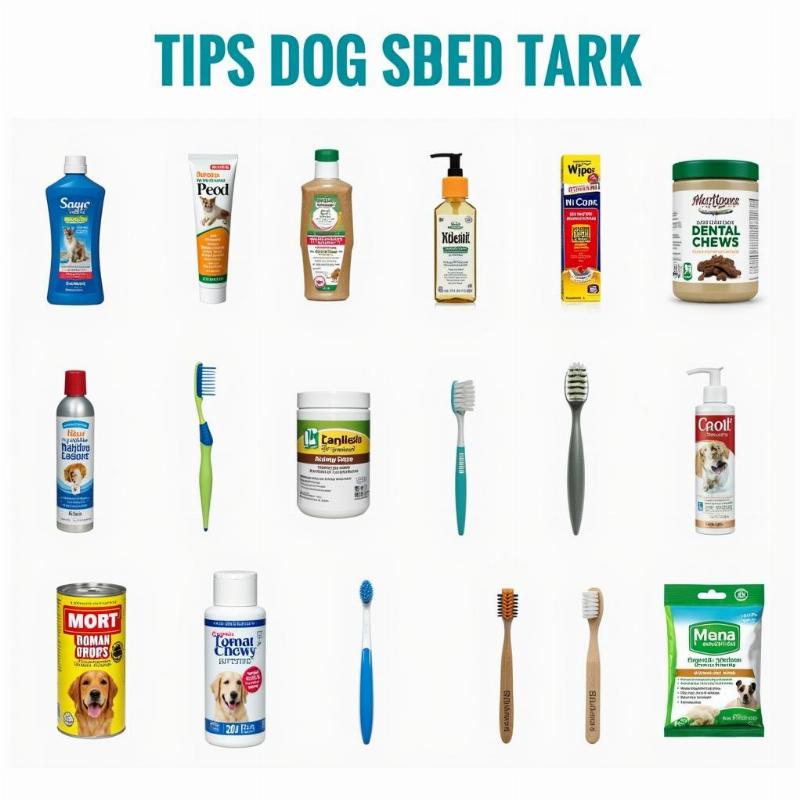Bleeding gums when brushing your dog’s teeth can be alarming. While it’s sometimes a minor issue, it can also indicate more serious underlying problems. Understanding why your dog’s gums bleed when brushing, how to address the issue, and when to seek professional veterinary care is crucial for maintaining your furry friend’s oral health. This guide provides you with everything you need to know about dogs gums bleeding when brushing.
Common Causes of Bleeding Gums in Dogs
There are several reasons why your dog’s gums might bleed during brushing. Some common causes include gingivitis, periodontal disease, trauma, foreign objects lodged between teeth, and even certain medical conditions. Gingivitis, the inflammation of the gums, is often caused by plaque buildup and is usually the first stage of periodontal disease. Periodontal disease, a more severe infection affecting the tissues surrounding the teeth, can lead to tooth loss and even systemic health problems if left untreated.
Sometimes, vigorous brushing or using a toothbrush that’s too hard can cause minor trauma to the gums, resulting in bleeding. A piece of chew toy, a small bone fragment, or even a piece of string lodged between the teeth can also irritate the gums and lead to bleeding. In rare cases, bleeding gums can be a symptom of a more serious medical condition, such as a clotting disorder or an autoimmune disease.
Preventing Bleeding Gums
The best way to address bleeding gums is to prevent them in the first place. Regular brushing is key. Aim to brush your dog’s teeth daily, using a veterinarian-approved dog toothpaste and a soft-bristled toothbrush. Never use human toothpaste, as it contains ingredients like xylitol that are toxic to dogs.
 Dog dental care products
Dog dental care products
Providing your dog with dental chews and toys can also help to mechanically scrape away plaque and tartar. You can also consider dental wipes for dogs teeth or a chlorhexidine dental rinse for dogs, which can be particularly helpful for dogs who resist brushing. For dogs with existing dental issues, your veterinarian may recommend professional dental cleaning under anesthesia.
When to See a Vet
While occasional minor bleeding might not be cause for immediate concern, persistent bleeding, especially accompanied by bad breath, loose teeth, difficulty eating, or excessive drooling, warrants a visit to the veterinarian. Your vet can diagnose the underlying cause of the bleeding and recommend the appropriate treatment.
Home Care for Bleeding Gums
If your dog’s gums bleed occasionally due to mild gingivitis or slight trauma from brushing, there are some things you can do at home to help. Gently massaging the gums can help to improve circulation and reduce inflammation. Adding a dental rinse to your dog’s water can also help to control plaque and freshen breath. However, if the bleeding is persistent or severe, you should consult your veterinarian.
How to Remove Trapped Hair in Dogs Gums
Sometimes, especially in long-haired breeds, hair can get trapped between the teeth and irritate the gums, causing inflammation and bleeding. You can carefully remove the trapped hair using dental floss or a small, blunt instrument. If you are unsure how to do this safely, ask your veterinarian or groomer to demonstrate the proper technique.
Advanced Gum Disease in Dogs
In cases of advanced gum disease, your veterinarian might recommend a more aggressive treatment plan, which could include antibiotics, pain medication, or even surgical intervention. Early detection and prevention are crucial for avoiding advanced gum disease and preserving your dog’s oral health.
Conclusion
Bleeding gums when brushing your dog’s teeth can be a sign of a minor issue or a more serious underlying problem. Regular brushing, appropriate dental care products, and routine veterinary checkups are essential for maintaining your dog’s oral health. If you notice your dogs gums bleeding when brushing, don’t hesitate to contact your veterinarian for advice and treatment options.
FAQs
- Why are my dog’s gums bleeding after I brush his teeth? This could be due to gingivitis, periodontal disease, trauma from brushing, a foreign object lodged between the teeth, or even an underlying medical condition.
- Can I use human toothpaste on my dog? No, human toothpaste often contains xylitol, which is toxic to dogs.
- How often should I brush my dog’s teeth? Ideally, you should brush your dog’s teeth daily.
- What can I do at home to help my dog’s bleeding gums? Gentle gum massage and dental rinses can help, but always consult your veterinarian if the bleeding is persistent.
- What are the signs of advanced gum disease in dogs? Bad breath, loose teeth, difficulty eating, and excessive drooling can all be signs of advanced gum disease.
- Can you floss dogs teeth? Yes, flossing can be beneficial for removing trapped debris and plaque, but ensure you use dog-specific floss and the correct technique.
- Are dental wipes a good alternative to brushing? Dental wipes can be a helpful supplement to brushing, but they are not a complete replacement for regular brushing.
Related Articles
- advanced gum disease in dogs
- how to remove trapped hair in dogs gums
- dental wipes for dogs teeth
- chlorhexidine dental rinse for dogs
- can you floss dogs teeth
Beautdogs.us is your premier source for comprehensive dog care information, breed insights, and product recommendations. Whether you’re a new dog owner or a seasoned expert, we offer trustworthy resources and guidance to help you provide the best possible care for your beloved companion. From understanding common health concerns like why your dogs gums bleed when brushing to finding the perfect products for your furry friend, Beautdogs.us is here to support your journey as a dog owner. Contact us today for more information! Email: [email protected], Phone: +1 501-555-7529.